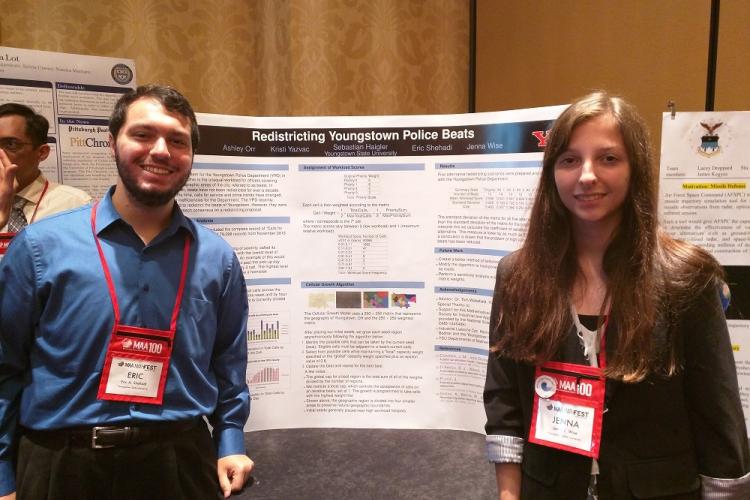Finding the best location to build a new healthcare facility is a challenge for many communities. Mercy Health, a primary healthcare provider in Youngstown, Ohio, needed to find the best place for their new facility, a location that would be convenient for the patients they were treating. What may be surprising is who Mercy Health turned to for help with this challenge: a team of undergraduate mathematics students.
Mercy Health teamed up with Tom Wakefield, a mathematics professor at Youngstown State University, to participate in the Preparation for Industrial Careers within the Mathematical Sciences (PIC Math) program organized by the Mathematical Association of America (MAA), which pairs math students with real-world challenges to solve. Students in Wakefield’s spring 2017 PIC Math course stepped up to the community challenge, pouring over massive amounts of outpatient data to help pinpoint the best location for the new healthcare facility. By the end of the course, the math students had developed a quantitative model to propose the best locations and service access for Mercy Health.
The students finished the class with real problem-solving experience within the healthcare industry, and Mercy Health had the best analysis for a new facility. All from an undergraduate mathematics course.
“There are lessons waiting outside of the classrooms and textbooks,” says Wakefield, who has been a PIC Math faculty participant since the program began in 2015, with support from Society for Industrial and Applied Mathematics (SIAM) and MAA. Students who recognize the value of self-study, learn new skills independently, and make assumptions and simplifications to help solve problems are of particular interest to employers, said Wakefield. These skills, partnered with analytical thinking and the ability to tackle problems in creative ways sets math majors apart from other job candidates.
 The PIC Math program aims to provide students with rigorous coursework and research experience that better prepares undergraduate students for industrial careers while also exploring the importance of math studies within the workplace. Faculty are trained over the summer to facilitate a PIC Math course at their institution, and students come together during the spring semester to collaborate on an assigned project.
The PIC Math program aims to provide students with rigorous coursework and research experience that better prepares undergraduate students for industrial careers while also exploring the importance of math studies within the workplace. Faculty are trained over the summer to facilitate a PIC Math course at their institution, and students come together during the spring semester to collaborate on an assigned project.
Data analytics, computational science, and operations research positions are just some of the many available positions to mathematics graduates in business, industry, and government careers. For a student to be successful in industrial careers in mathematics, they need strong problem-solving, computing, and communication skills, said Wakefield.
So how can undergraduate students tackle a problem like the students of Youngstown State University? If an institution doesn’t offer the PIC Math course, Wakefield suggests that students “find a mentor in their interested career [and] gain awareness by shadowing someone in the field to learn more about the type of work typical in that career.”
The PIC Math project is made possible by the current support of the National Science Foundation (NSF-DMS-1722275 and NSF-1345499) and the past support of the Society for Industrial and Applied Mathematics and the BIG Math Network.

